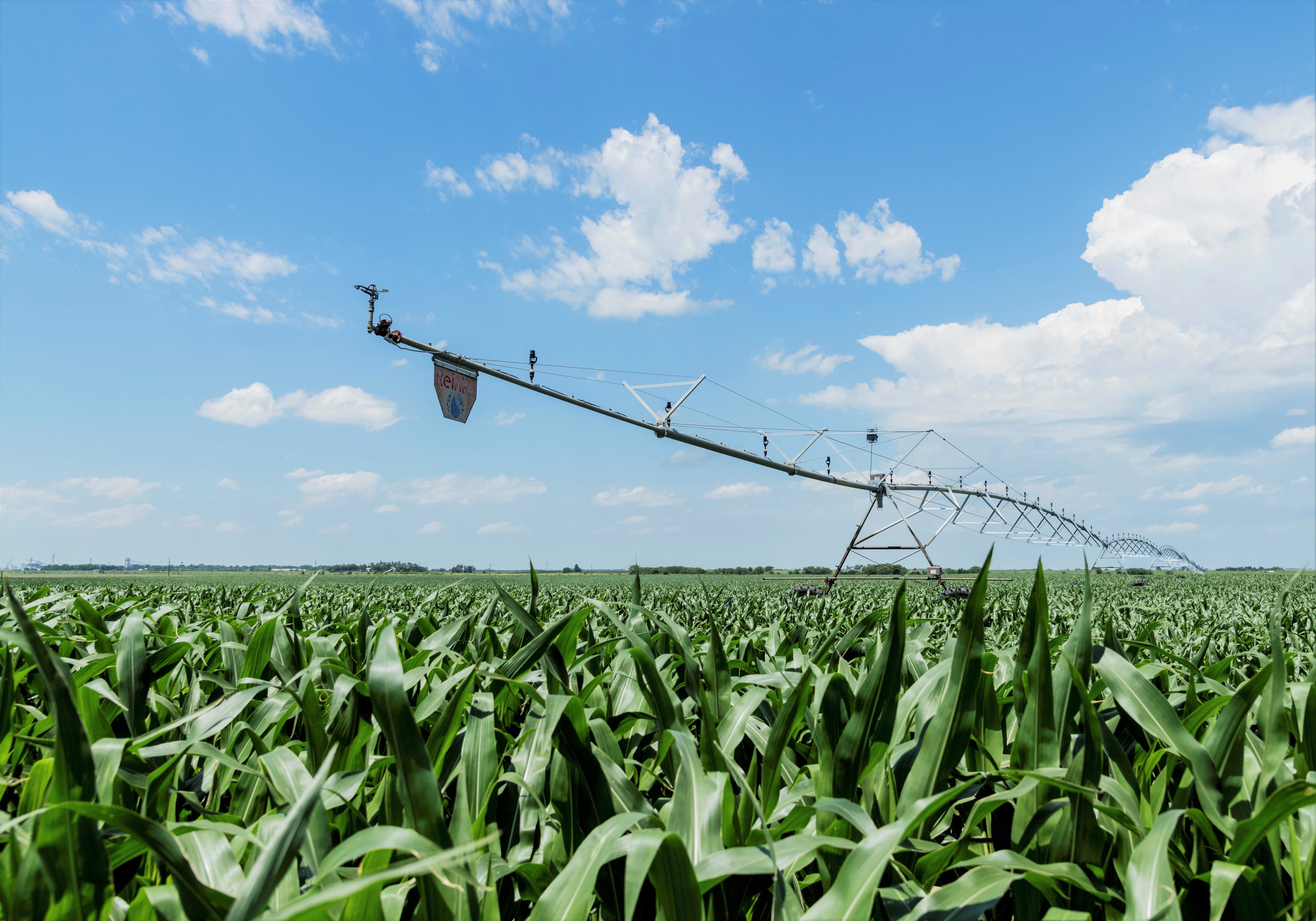

Moisture stress early in the season has very little impact on yields when compared to similar stress during pollination and grain fill periods. Slightly dry, non-restrictive soil conditions can be favorable for deeper root development. When we see these brief periods of stress early but conditions are still favorable for plant growth, irrigation is not always necessary. Watering too early can have a negative impact later in the season. Keeping the soil saturated increases potential for leaching of Nitrogen below the root zone and/or denitrification, which is the loss of Nitrogen to the air. If crops are under stress for a prolonged period, irrigation will be recommended. Irrigation early in the season can help alleviate hard, compacted soil conditions that hinder root development. A ½” irrigation can also activate herbicide residuals to prevent new weed emergence after post herbicide applications.
Before starting any irrigation, a few considerations and calculations need to be made about the depth of the plant’s roots, available plant water from the soil, and the daily crop water use. Corn at the V6 to V8 will have a root system 18” to 24” deep and has access to about half of the plant available water that a full sized plant with a deeper root system has. The soil structure along with percent organic matter will determine the water holding capacity of your soil, ranging from 0.60” of water/ foot of soil on fine sand to 2.00” water/foot of soil on silt loam and clay soils. It is recommended that irrigation systems maintain soil moisture levels between 60% and 80% field capacity on a silt loam soil to prevent stress to the growing crop while still having storage room available for rainfall. The available plant water determined with a hand probe or moisture-sensing device, divided by the daily crop water use will provide an estimate on when irrigation must be completed to prevent crop stress. Subtracting the time it takes for your system to complete irrigation should give you a good idea of when to begin watering. Low capacity wells and irrigation systems on electric load control will need to start earlier and/or run more often to stay ahead of crop water needs.
Daily crop water use is determined from historical data, but calculating crop water use with an ET gauge will be more accurate and reflective of current weather conditions. A hand probe of an experienced agronomist can estimate soil moisture very well, while soil moisture probe technology provides real time water readings via a website that producers may find more helpful. Moisture probes provide charts to better predict water use trends and help determine actual rooting depth. The addition of variable rate application equipment may further maximize irrigation efficiency.